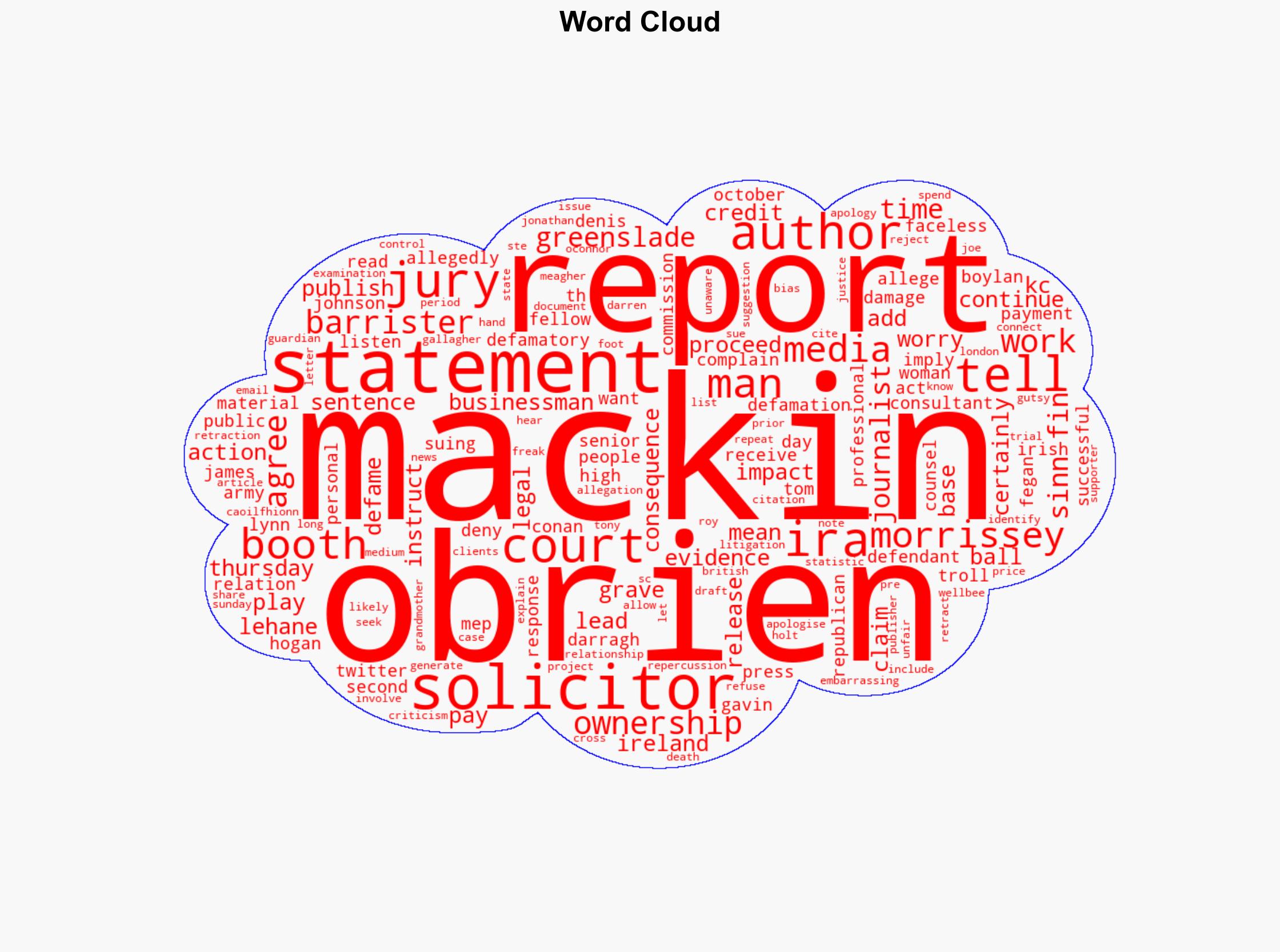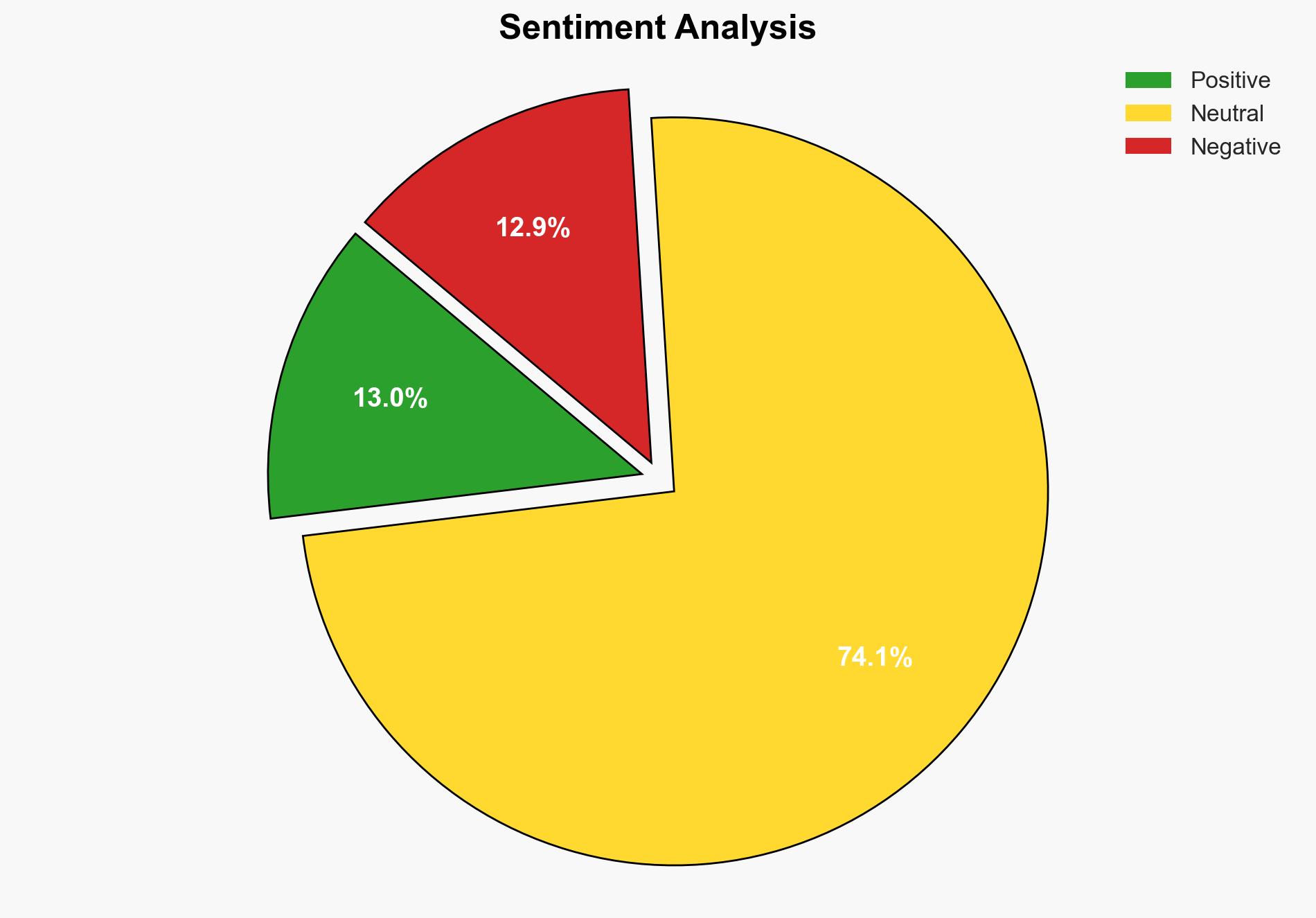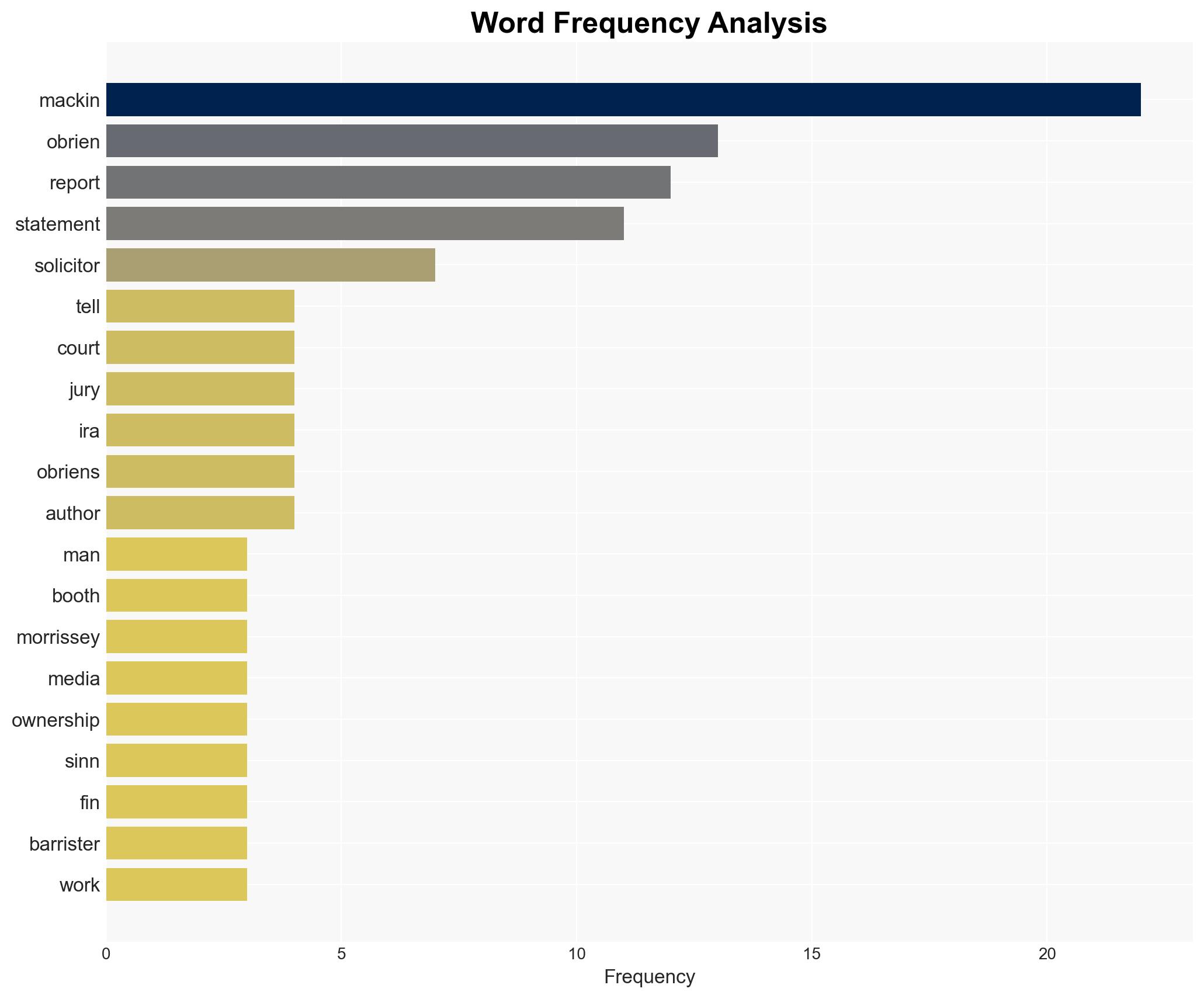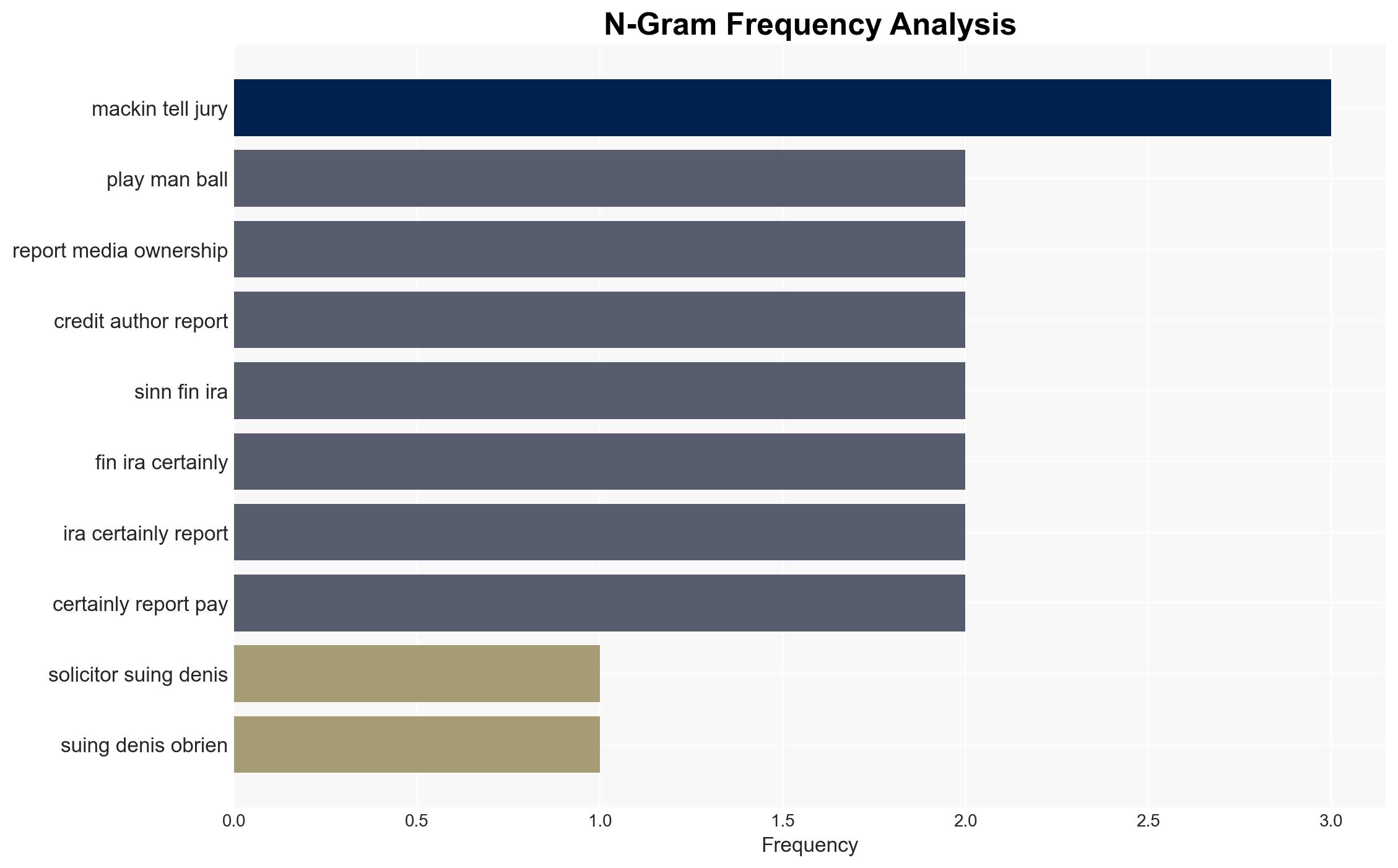Denis OBrien played the man not the ball court told in defamation case – The Irish Times
Published on: 2025-11-13
AI-powered OSINT brief from verified open sources. Automated NLP signal extraction with human verification. See our Methodology and Why WorldWideWatchers.
Intelligence Report: Denis OBrien played the man not the ball court told in defamation case – The Irish Times
1. BLUF (Bottom Line Up Front)
With a moderate confidence level, the most supported hypothesis is that Denis O’Brien’s statement was strategically aimed at discrediting the report and its authors due to perceived threats to his business interests. Recommended actions include monitoring the legal proceedings for potential precedents in defamation cases and assessing impacts on media freedom and business reputations in Ireland.
2. Competing Hypotheses
Hypothesis 1: Denis O’Brien’s statement was a calculated move to undermine the credibility of the report and its authors due to its potential negative impact on his business interests.
Hypothesis 2: The statement was a defensive reaction to perceived bias and unfair criticism in the report, without a strategic intent to defame.
Hypothesis 1 is more likely given O’Brien’s history of litigation against media entities and the strategic nature of public relations in protecting business interests.
3. Key Assumptions and Red Flags
Assumptions: It is assumed that O’Brien perceives the report as a significant threat to his reputation and business operations. The legal system will act impartially in adjudicating the defamation case.
Red Flags: The involvement of political entities like Sinn Féin and the IRA in the narrative raises potential bias and political motivations. The lack of a retraction or apology from O’Brien suggests a deliberate stance.
4. Implications and Strategic Risks
The case could set a precedent for future defamation suits involving high-profile individuals and media entities in Ireland, potentially impacting media freedom. There is a risk of increased polarization and politicization of media ownership issues, which could escalate into broader political or economic tensions.
5. Recommendations and Outlook
- Monitor the legal proceedings for outcomes that might influence media and business practices in Ireland.
- Engage with media and legal experts to assess the potential impact on media freedom and business reputations.
- Best-case scenario: The case is resolved with minimal impact on media freedom and business operations.
- Worst-case scenario: The case leads to increased litigation against media entities, stifling journalistic freedom and impacting business reputations.
- Most-likely scenario: The case results in a legal precedent that influences future defamation suits, with moderate impact on media practices.
6. Key Individuals and Entities
Denis O’Brien, Darragh Mackin, Gavin Booth, James Morrissey, Lynn Boylan, Sinn Féin, IRA, Roy Greenslade.
7. Thematic Tags
Regional Focus: Ireland, Media Freedom, Defamation, Business Reputation, Political Influence
Structured Analytic Techniques Applied
- Causal Layered Analysis (CLA): Analyze events across surface happenings, systems, worldviews, and myths.
- Cross-Impact Simulation: Model ripple effects across neighboring states, conflicts, or economic dependencies.
- Scenario Generation: Explore divergent futures under varying assumptions to identify plausible paths.
- Cognitive Bias Stress Test: Structured challenge to expose and correct biases.
Explore more:
Regional Focus Briefs ·
Daily Summary ·
Methodology





